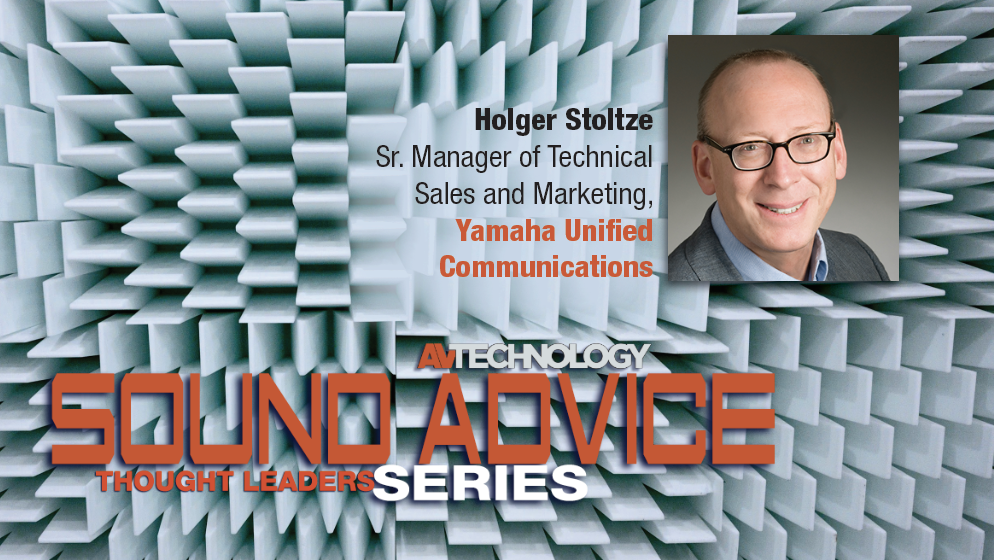AVT Question: Intelligible audio is the lynchpin that holds the entire conferencing experience together. What are some best practices to help ensure reliable, intelligible audio as the demand for hybrid solutions grows? [November 2021]
Thought Leader: Holger Stoltze, senior manager of Technical Sales and Marketing, at Yamaha Unified Communications
A video conference without audio becomes a pantomime, and that’s why for remote meetings and hybrid learning experiences, it’s essential to invest in audio solutions that suit the size and nature of the meeting, capture the voices of all participants, correct for poor room acoustics, block out unwanted noise, and are easy to configure and use.
[ Speech Privacy System Comfortably Masks Private Conversation ]
Microphone type, style, and configuration are naturally top considerations for capturing the voices of presenters and participants. Will the mic need to capture a small group around a table, a moving presenter, or questions from the audience? For smaller groups—wearable microphones, directional tabletop mics, or a portable speakerphone can keep the microphone close to the speakers for better sound pickup even in acoustically challenging rooms.
A video conference without audio becomes a pantomime. — Holger Stoltze, Yamaha UC
For larger gatherings, consider using ceiling-mounted multi-beam tracking microphone technology. These sophisticated mics automatically detect and capture voices from anywhere in the room, while noise reduction algorithms and adaptive acoustic echo cancellation block out ambient noise. For large audiences, also consider a line array speaker system for a more evenly distributed sound output pattern focused on the audience without wasting output energy on the spaces above and around them.
More Thought Leaders Series Articles
>> 22Miles Product Roadmap – Re: Pandemic
>> BlueJeans by Verizon Product Roadmap – Re: Pandemic
>> ClearOne on Conferencing Audio
>> Listen Technologies Product Roadmap – Re: Pandemic
>> Poly Product Roadmap – Re: Pandemic
>> SurgeX Product Roadmap – Re: Pandemic
>> VuWall Product Roadmap – Re: Pandemic
>> Yamaha UC on Conferencing Audio
Today’s smart audio technology is also capable of automating the solution of difficult communications and acoustical challenges while reducing setup time, costs, and complexity. Look for technology that automatically detects installed system components, configures the devices, and optimizes audio performance.
Your system should be user-friendly while allowing for contactless conferencing. It should be compatible with your existing system so you can connect to legacy products such as control systems, codecs, and speakers. It should be easy for your AV/IT department to manage remotely. And finally, choose a unified communications system that is flexible, scalable, and reliable for a truly future-proof solution.

